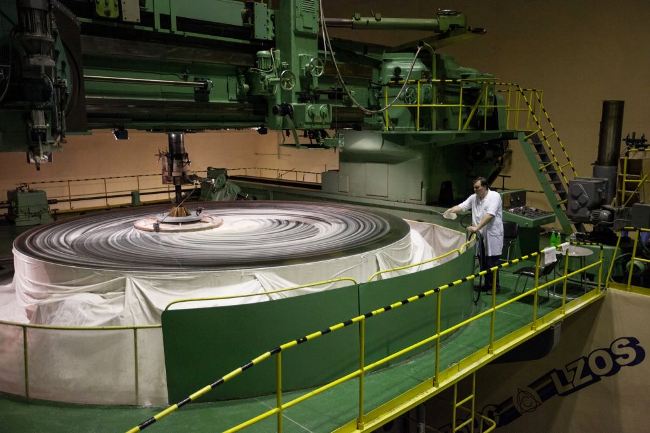The first mention of Lytkarino dates back to the 15th century - in the archive of the Chudov Monastery, a deed of a certain nun Martha was found, in which it was said about the “village of Lytkorin”. Later, the estate passed into the possession of Peter I's educator - Nikita Zotov and his descendants. Today, the family estate houses the Lytkarinsky Museum of History and Local Lore. Near Lytkarino there are several other interesting architectural monuments that attract history lovers. Here, on the high bank of the Moskva River, the Petrovskoye Estate with two old churches and a park is located.
.jpg)
Photo: City portal Lytkarino
However, even beach lovers can have an interesting time in Lytkarino. Volkushinsky or Lytkarinsky quarry is perhaps the most popular place in summer. Today it is a lake with sandy beaches, and once sand was mined here. Limestone and sandstone mining began in this place many centuries ago. There is a version that the name of the city itself comes from the word "lytka" - this is an old stone-making tool. From slabs of Lytkarinsky sandstone, the following are laid out: the retaining wall of the St. Basil's Cathedral on Red Square, the foundations of the Bolshoi Theater, the Manezh and much more.
According to scientists, these deposits were once the bottom of an ancient sea. Tacit witnesses to this are the shell prints of the fossil mollusks of the Jurassic period, which can be found in local sandstones. In the 1930s, active development of a quarry began in Lytkarino. The local quartz sand, rare in its purity, could become an excellent raw material for the production of high-quality glass. Therefore, it was decided to build the Lytkarino Optical Glass Plant (LZOS). During the war, the enterprise manufactured searchlight mirrors for anti-aircraft air defense systems, armoured glass for aircraft, viewing prisms for tanks and other products for the front. Later, LZOS began producing optics for instrument making, medical equipment, camera lenses and other industry products.
Space optics from Lytkarino

Today it is a city-forming enterprise that is part of the Rostec Shvabe holding. LZOS is a leading Russian manufacturer of optical glass and fibreglass, large-size astronomical and space mirrors, space lenses, various optical parts and devices. It is thanks to the Lytkarinsky plant that Russia is one of the three largest world suppliers of optical glass. In addition to the production of optical materials, the plant is a leader in the manufacture of large-size astronomical optics - LZOS produces about a third of the entire world market for large-size optics.
Large mirrors with a diameter of several meters at LZOS began to be produced back in the 1980s. It is a key part of any telescope, and perhaps the most complex part. LZOS specialists have developed a unique technology that allows them to manufacture a mirror weighing several tens of tons and process it with nanometer accuracy. So in Lytkarino were produced mirrors for the most famous telescopes in the world: the Large Azimuth Telescope (BTA), once the largest in the world, and today - in Eurasia; the Chinese giant LAMOST, the second largest Thai telescope in Asia TNT and many other international projects.
Where engines are taught to fly

The development of Lytkarino is connected, among other things, with the founding of significant enterprises of the domestic engine building here. The city is home to the CIAM Research and Test Center - Europe's largest experimental aircraft engine complex, the Soyuz Turaev Machine-Building Design Bureau, where liquid-propellant rocket engines for spacecraft are created, and the Lytkarinsky Machine-Building Plant (LMZ).
The enterprise was founded in 1955 as a branch of the experimental plant No. 165 (now the A. Lyulka Design Bureau is a branch of the UEC-UMPO). Units and parts were manufactured at the plant in Lytkarino, and several generations of aircraft engines of the AL brand (Arkhip Lyulka) were tested. Today Lytkarinsky Machine-Building Plant is also a branch of UEC-UMPO. This is a testing base for all prototypes produced by UEC-UMPO. Here, in the literal sense, the engines learn to fly - after the tests in Lytkarino, the engines go directly to the aircraft.
For example, in 2014, state tests of the 117С product - an engine for the 4 ++ Su-35S generation fighter - were carried out here. In November 2016, the first ground launch of the engine for the fifth generation Su-57 fighter took place at LMZ. Now the plant has carried out a large-scale reconstruction of the test station, the construction of a new stand has been completed, where prototypes of promising aircraft engines will be tested.
Source. Published with abbreviations.











